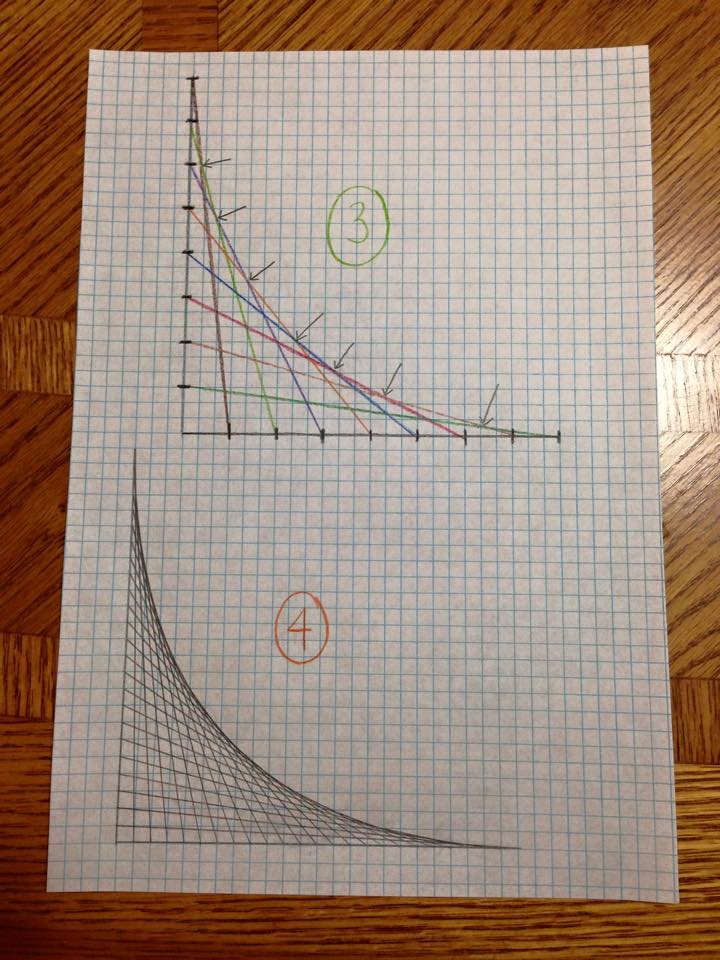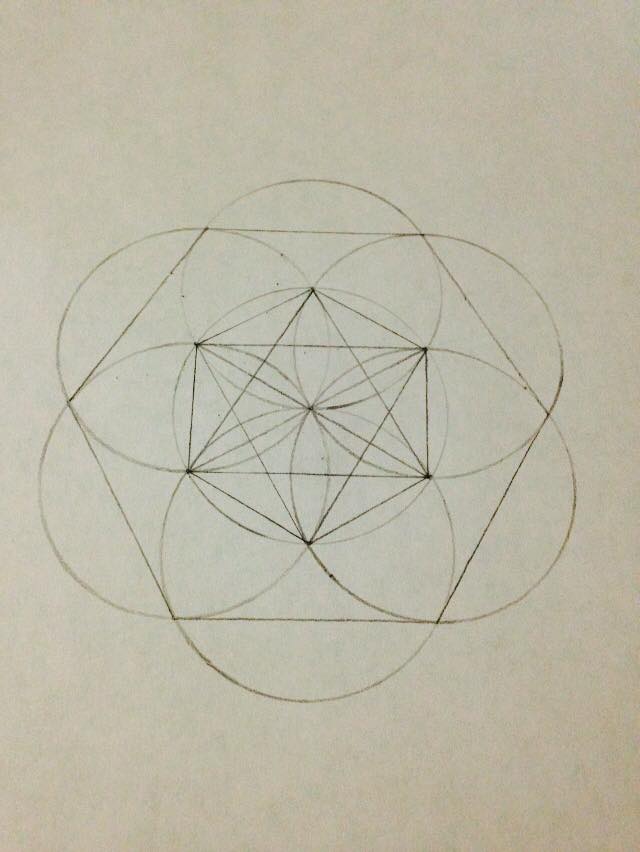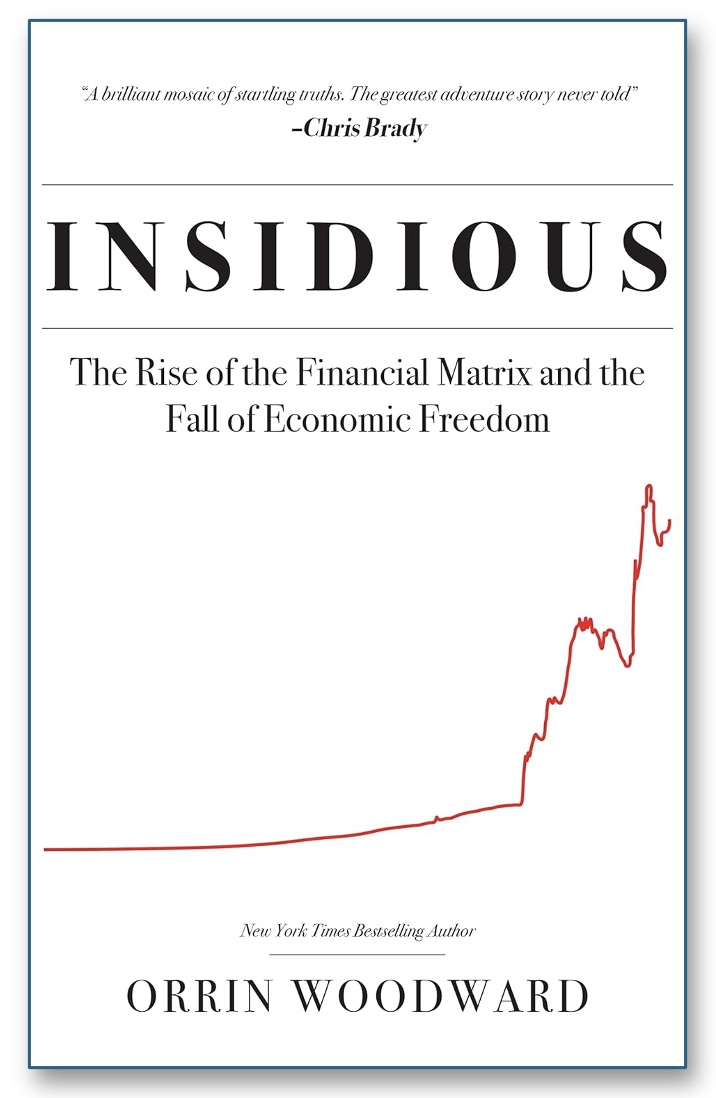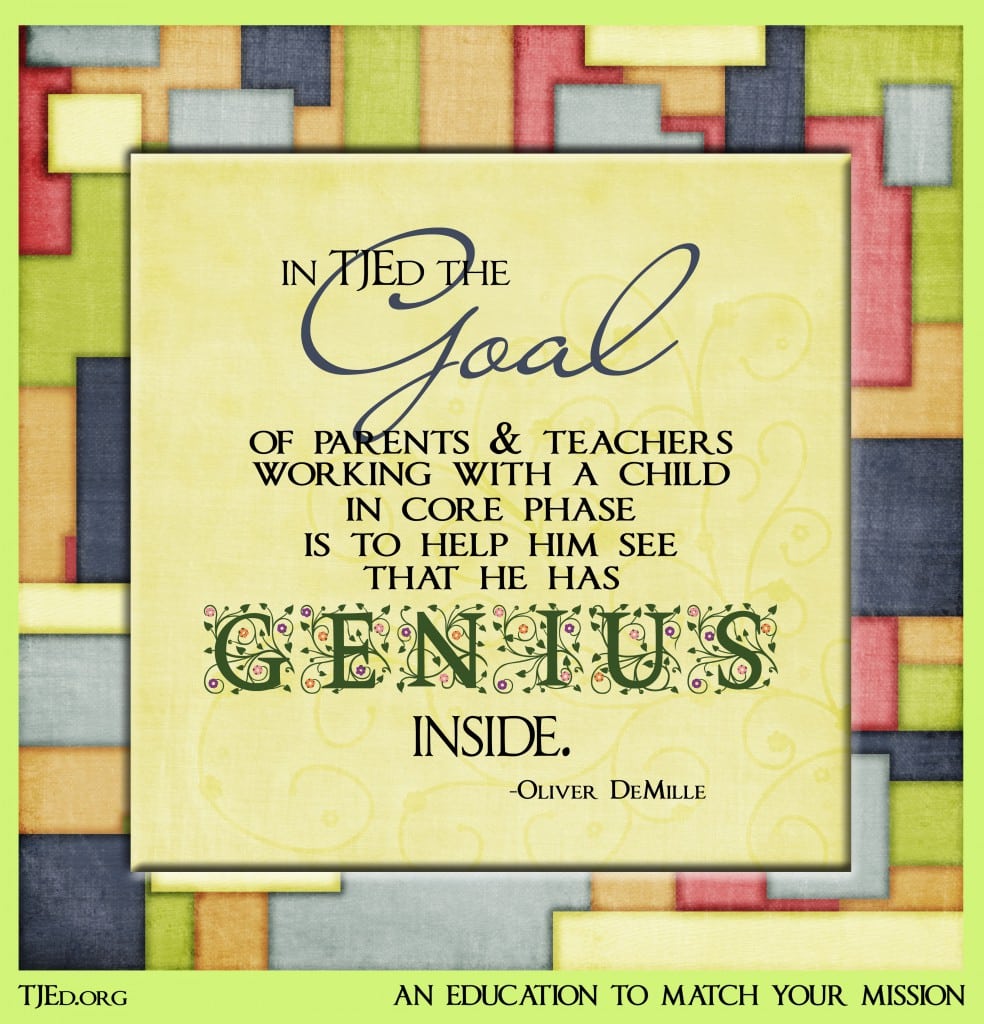[Scroll down to download free math course…]
This is it.
This is how to teach math, even if you stink at it. Even if you hate math.
And even if you don’t.
 by Rachel DeMille, TJEd.org
by Rachel DeMille, TJEd.org
The math-project images in this post are from real families, friends of mine, who have given permission for them to be used here. Most were created with a sense of authentic wonder that math-love at this level was even possible!
 The study of math has lost its soul in the past century. We have become so obsessed with our comparative lack of math proficiency that we have over-compensated on the side of learning skills without drawing meaning from the study of math. It was not always so: In ancient times math was strongly tied to music, philosophy and other “practical” pursuits.
The study of math has lost its soul in the past century. We have become so obsessed with our comparative lack of math proficiency that we have over-compensated on the side of learning skills without drawing meaning from the study of math. It was not always so: In ancient times math was strongly tied to music, philosophy and other “practical” pursuits.
The net result of this lack of vision is that today’s learners (and teachers!) are uninspired to explore math; they believe they are no good at math, and ultimately, that math has nothing to do with anything they care about. Or, they excel at the techniques of math study and evaluation, and generally lack the ability to explore and create mathematically.
Thank goodness for a surge of great resources, with an ever-expanding field, to help today’s learners with the elegance and titillation of mathematical study. We are relearning the language of math in the 21st century!
 Inspirational Math
Inspirational Math
For some parents and teachers — especially homeschoolers it seems — teaching math and science is the greatest worry. As TJEders, those of us who aren’t math-inclined find this especially challenging: How do you “Inspire” when you don’t like math? How do you use “Classics”? And Omigoodness, what of “You” in math studies? Must I really???
Never fear. As with everything else, your change of heart and new-found inspiration in math (suggestions to discover this new-found inspiration follow below…) will infuse your home and classroom with a dynamic and enthusiastic Love of Learning that leads to a successful Scholar- and Depth-approach to mathematics.
As with everything worthwhile, “there ain’t no quick fix”; even so, you’ll be amazed at how much you have to offer as a mentor and educator when you find yourself having “a-ha’s” and epiphanies, and when you start to daydream and ponder in the wee hours about the mathematical thoughts, readings and projects that are spinning in your creative mind! Sound impossible? It’s not! This has been my experience. What have you got to lose?
 Your goal: to inspire your students to love math and to become life-long students of math.
Your goal: to inspire your students to love math and to become life-long students of math.
Your strategy: You. Inspire. Classics.
Your tactic: come face-to-face with greatness, experiencing the works of others who love math and are life-long math students.
It works! It will work for you!!!
Math, Mentored by Math-Lovers
 In our award-winning Mentoring in the Classics subscription, we recently took on math with Schneider’s ground-breaking A Beginner’s Guide to Constructing the Universe. We are delighted to report that math lovers found new levels of enjoyment, while math-phobics rescripted their thinking and found that they’re not math-stupid after all!
In our award-winning Mentoring in the Classics subscription, we recently took on math with Schneider’s ground-breaking A Beginner’s Guide to Constructing the Universe. We are delighted to report that math lovers found new levels of enjoyment, while math-phobics rescripted their thinking and found that they’re not math-stupid after all!
This was so successful that we want to now share it freely with everyone, and invite all who are willing to join in the revolution! So here, below, is the mentoring content prepared for Mentoring in the Classics.
 Welcome to Mentoring in the Classics: Schneider’s A Beginner’s Guide to Constructing the Universe
Welcome to Mentoring in the Classics: Schneider’s A Beginner’s Guide to Constructing the Universe
This post contains:
- The introductory mentoring content, including audio and Study Guide I
- The debriefing mentoring content, including Enhanced Study Guide I & II
Please scroll down to access your download links.
AND PLEASE… **SAVE THE DOWNLOADS TO YOUR COMPUTER FOR UNINTERRUPTED PLAY AND LONG-TERM ACCESS.
How This Class Works
To gain the most from your mentoring experience, we encourage you to use the following order:
- Listen to the audio introduction, available to download from the links below.
- Review the Study Guide (PDF download, linked below)
- Read the book, pen in hand, utilizing tips and prompts from the Study Guide and Intro Audio
- Discuss with your local book group, family members, online community, etc.
- Post blog articles and other creative responses to the work, and share them!
- Review the Debriefing Audio mentoring, and the updated Study Guide (including parts I & II) – all linked below.
Introductory Audio Mentoring
This month’s Introduction features Oliver DeMille.
Here are your options to download the audio file (identical audio is available in two download options), and the Study Guide:
- Intro Audio (mp3 format)**
- Intro Audio (zip file)**
- Study Guide (pdf) (scroll down to see Study Guide content online in this post)
See below** for instructions on saving your audio.
Debriefing Audio Mentoring and Study Guide
This month’s Debriefing features Oliver and Rachel DeMille, Ian Cox (25) and Emma DeMille Cox (22), Oliver James DeMille (23) and Sara DeMille (21).
We made special efforts to confine our discussion to the topics that would be best represented in audio – so some of the “mathier” stuff that totally fascinated us was not included. Too confusing without a whiteboard to demonstrate!
However, we DID enhance the Study Guide with TONS of new stuff. You’re going to love it!
Here are your options to download the Debriefing Audio and Enhanced Study Guide:
- Debriefing Audio (mp3 format)**
- Debriefing Audio (zip file)**
- Updated Study Guide with AMAZING additional resources (pdf) (scroll down to see Study Guide content online in this post)
See below** for instructions on saving your audio.
Study Guide, Parts I & II:
Schneider’s A Beginner’s Guide to Constructing the Universe
Prepared by Rachel DeMille
This Month’s Mentoring Content, Part I
 The Introductory Mentoring Audio, (click here to listen** >>), consists of a small-group tutoring session including Oliver, Rachel, and daughters Emma (22) and America “Meri” (11).
The Introductory Mentoring Audio, (click here to listen** >>), consists of a small-group tutoring session including Oliver, Rachel, and daughters Emma (22) and America “Meri” (11).
Please take a moment to download your audio content to your computer immediately so you have uninterrupted access to it!
1: Ideas for Writing or Discussion:
- What is “math”?
- How does your definition of “math” differ after reading this book?
- Which of the 7 Steps of math study have you emphasized most in your life?
- Which step are you utilizing most with those you teach and mentor?
- Which step are you planning to emphasize most in the next while, in your own studies? In your teaching?
- What math terms do you use in everyday language?

o What’s the difference?
o The “solution” is “relatively” “simple.”
o You’ve got a big “problem!”
o There are “more” “factors” than you’re admitting.
o The “sum” of the “parts” is “great than” the “whole.”
o A “lesser” man would never have endured that.
- How can using math terms in your everyday language enhance your thinking, and help your children/students develop more fluency with the language of math? (exponential, rounded, fraction, dividend, quarter, equal, tangent, ….?)
- Have you found yourself thinking more about math during/since the time you have spent reading this book?
- What new patterns and problems have you noticed or entertained in your mind?
2: Resources for Additional Study:
- Math Resources on TJEd.org [http://tjed.org/Math-Sci/]
- Read Your Way to Math Learning
- What’s Math Got to Do With It?
- Sensus Plenior/Sensus Solum
- Enhance your daily Math Vocabulary!
- Lockhart’s Lament
- Florence Nightingale, Mathematician
- Math Games for Families and Children
- Math Classics for Adults
- Math Classics for Kids
- Math Videos to Inspire You
- Schneider’s website and resources (scroll down for fun links!)
3: Article: What’s Math Got To Do With It?
 I’ve often said that the “Why” we teach something informs the “How.”
I’ve often said that the “Why” we teach something informs the “How.”
Years ago Oliver wrote an introduction to a math course. He articulated “Why” we learn and teach math, and I think having this vision is not only inspiring and motivating, but really helps us focus our approach and methods.
He created a list of “values” that clearly articulates the meaning and purpose of math education, and (along with the introductory paragraphs written by the course instructor, Troy Henke) I share it here with you:
“Mathematics is an integral part of a statesman’s education . . . . Math teaches a person to think in a way that no other field does. As a person studies math, he learns to:
- Seek and recognize patterns
- Explore the relationship between things
- See similarities and also distinctions
- Analyze logically but with a deep sense that there is a right answer and a set ideal worth detecting
- Compare and contrast
- See things in black and white
- See infinite shades of grey and therefore avoid jumping to conclusions
- Seek evidence for conclusions and check opinion with first-hand research
- Put his own pen to paper before accepting what society tells him
- Seek for absolutes
- Remain open to surprising new information which makes past conclusions limited though perhaps still accurate
“Now, clearly, the practical art must also be mastered—
we want you to be able to pass any standardized test with the highest marks.
“But more importantly, we want you to be able to think like
an Archimedes, a Descartes, a Newton, a Sophie Germain, an Einstein.”
*****
4: Concepts- How to Learn and Teach Math:
1. Discover stories about math, and those who use, study and love it.
2. Fall in love with shapes, patterns, numbers, etc.
3. Be, or find, a close example of a math-loving math student
4. Use spreadsheets in every-day life
5. Read Math Classics
6. Study math problems, skills, techniques, language and testing
7. Study the Greats on a higher level
6: Level 5 Mentor Prompt on A Beginner’s Guide to Constructing the Universe:
- Using a pen in the margins and endsheets, or a separate notebook, record the conversation that occurs between Michael Schneider and yourself.
- Capture your epiphanies and questions, and make a note of the things you want to share with others.
7: Read, with pen in hand, A Beginner’s Guide to Constructing the Universe, and review the above Study Guide prompts for more study ideas and activities.
8: Study Guide, Part II
Now that you’ve heard the Mentor Debriefing Audio, check out these additional resources!
[This section will include images shared by class participants of the “math fun” that was prompted by their study this month!]
 Best books to get you loving math:
Best books to get you loving math:
- Mathematicians are People, Too
- Math Doesn’t Suck (Just ignore the title if it bugs you. The content is delightful!)
- Secrets of Mental Math
- Mathemagic (Childcraft Volume 13)
- Oliver’s recommended, unofficial sequel to Schneider: The Tao of Physics
Best books to get your kids loving math:
More Resources:
- This article totally blew our mind. (PDF)
- Bedtime Math (free daily email with fun math for you to share with your kids – leveled for early, middle and later learners!) >>
- You simply MUST check out this YouTube channel! Vi Hart >>
- Fun kid tutorial >>
- Math Curricula for Home Learning (PDF)
- Why Americans Stink at Math (NY Times) >>
- More on “Liber” >>
- The Best Math Curriculum (TJEd.org) >>
- The Elegant Number 9 (TJEd.org) >>
- Let’s Learn Times Tables (PDF) >>
- A Better Way to Teach Math (NY Times) >>
- Car Watching from Math Inspirations >>
- Measurement Scavenger Hunt from Math Inspirations >>
- Must Watch Chemical Reactions >>
- Right-brained Math: Concepts to Facts >>

- Don’t Teach Math, Coach It (NY Times) >>
- How Many Things Are There? (YouTube) >>
- Math Study Fun (Be sure to use this in the context of the 7 Steps of math learning – and not to drill & kill!!
- Flatland (this quirky book is fun for math lovers, and utterly strange for everyone else)
- Rithmatist (this clean, fun adventure by fantasy writer Brandon Sanderson – appropriate for youth and older children – features geometry!)
- The book Rachel mentioned toward the end: Our Home
- The math-music video Rachel mentioned >>
- On these blogs and YouTube channels, take some time and wander through related videos, posts, and other links! You’ll find lots of food for mathematical though.
Here is a diagram of Rachel’s “7 Pattern” (referenced in the audio):
Math Fun!
Check or submit your answers in the comments here >>
Ian’s Notes on…
A Beginner’s Guide to Constructing the Universe: The Mathematical Archetypes of Nature, Art, and Science A Voyage from 1 to 10, by Michael Schneider
Prepared by Ian Cox
This section will feature images submitted by class members of the projects they did at home, inspired by this book!
Note: This is by no means a complete list of all the experiments and hands—on exercises found in this book. Have fun finding and doing the “To Do’s” Throughout this book!
To Do:
 Monad: Wholly One
Monad: Wholly One
1. Page 17 Half of a circle has the same area as a rolling circle within it.
a. Compare and contrast different shapes to a circle. Circles with the same perimeter cover more area.
Dyad: It Takes Two to Tango
2. Pg. 32 Doodle with the dyad.
Triad: Three—Part Harmony
3. Pg. 51 Construct a set of Borromean Rings. They only overlap while none interlock.
4. Pg. 53 Light is a mixture of colors. Ex White = Red, Green and Blue-Violet. Additive vs. Subtractive Colors.
Tetrad: Mother Substance
5. Pg. 61 How to bring depth to the universe. Construct the tetrahedron
6. Pg. 62 Tetrahedral wire frame and soap solution to make bubbles.
7. Pg. 67 Fill a jar with soil, water and air then shake it to discover the natural order of the elements.
8. Pg. 70-71 Two ways to construct a square.
9. Pg. 73 Construct square with a square etc.
10. Pg. 80 Salt in bowl of water crystallizes as the water evaporates.
11. Pg. 81 Rubber ball and chalk to draw five elements.
12. Pg. 83 Construct the five elemental shapes.
13. Pg. 84-85 Two ways to construct a cube. Create a cube with wire and put it in bubble solution.
14. Pg. 86 Construct deltahedra.
15. Pg. 87 Construct Icosahedra.
16. Pg. 88 Construct a tetrahedron, octahedron, and an icosahedron.
17. Pg. 94 Self-discovery
Pentad: Regeneration
18. Pg. 102 Cut an apple and pear at its equator to see their star/pentagon formation.

19. Pg. 103 Tie your shoes. You just made a “goo luck” pentagon.
20. Pg. 105 Classic Puzzle.
a. And how to cut out a star.
21. Pg. 111-112 Doodle and experiment with pentagons an pentagrams with paper construction.
22. Pg. 113 Inscribe life forms with pentagons and stars.
23. Pg. 119 The Golden Mean: Divide a Graph to get approximately 1.62 of the Fibonacci sequence. 1/89 = Fibonacci sequence.
24. Pg. Experiment with any two numbers, divide them, and see the sequence approach pi (Ф).
25. Pg. 121 How to divide a line at the Golden Mean.
26. Pg. 122-123 Constructing Golden Mean calipers.
27. Pg. 124-126 Explore Golden Mean ratios in nature with the human body.
28. Pg. 130 Aesthetics of Ф, look around at common house items (3×5, 5×8)
29. Pg. 131 Construct a Golden Rectangle.
30. Pg. 132 Construct a 3-D Golden Frame.
31. Pg. 135 Find the Golden Mean with calipers on Notre Dame.
a. Pg. 136 On a Sarcophagus
32. Pg. 140 Spirals: Doodle some! Construct as well as compare and contrast the Archimedean Spiral vs. the Golden Spiral
33. Pg. 142 Construct a Golden Spiral.
34. Pg. 145 The Golden Triangle and Spiral.
35. Pg. 148 Self-replicating balance: Another way to see this principle of balance through change is to bend a piece of wire into a golden spiral and balance it by a pencil of straw through the eye.
36. Pg. 158 Observe streams, ponds, rowboats, etc.
37. Pg. 161 Observe clouds, weather, fire, flags, etc.
38. Pg. 165 See plants as energy.
39. Pg. 169 Look at leaves from the perspective of the sun.
40. Pg. Build a plant replica.
Hexad: Structure‐Function‐Order
41. Pg. 179 Ponder Hexad: Stucture-Function-Order
42. Pg. 183 Construct the Hexagon
43. Pg. 184 Observe symmetry’s
44. Pg. 185 Designs and patterns.
45. Pg. 186 Hexagonal knot.
46. Pg. 187 Circumference relations.
47. Pg. 187 Musical Hexagon
48. Pg. 191 Doodle Hexagons.
49. Pg. 197 Construct Dodekagon
50. Pg. 199 Thirteen clay balls, twelve circle the one.
51. Pg. 205 Trace the Great Seal of the United States of America with a Hexagon.
52. Pg. 213 “Square the Circle”
53. Pg. 216 Geometry of Stonehenge.
Heptad: Enchanting Virgin
 54. Pg. 225 Divide 360 degrees by 1, 2, 3, 4, 5, 6, 7, 8, 9, 10
54. Pg. 225 Divide 360 degrees by 1, 2, 3, 4, 5, 6, 7, 8, 9, 10
55. Pg. Construct approximate heptagon.
56. Pg. 228 Doodle with Athena’s web
57. Pg. 229 Make a heptagon audible.
58. Pg. 230 Construct a heptagon with knotted string, paper knot, and tooth picks.
59. Pg. 237 Experiment with music.
60, Pg. 242 Construct a Lyre of Apollo
61. Pg. 247 Tracing paper over painting.
62. Pg. 252 View rainbow with each eye individually.
63. Pg. 253 View color TV with a magnifying glass.
64. Pg. 263 Focus on “the heart” chakra.
Octad: Periodic Renewal
65. Pg. 267 Try to fold a piece of paper in half eight times.
66. Pg. 270 Create and octagon.
 67. Pg. 271 Hear proportions
67. Pg. 271 Hear proportions
68. Pg. 273 Trace octagons on creatures to see symmetry.
69. Pg. 274 Construct the breath of the compassionate.
70. Pg. Guitar strings and periodic recurrence.
71. Pg. Resonance, or vibrations, of a car.
72. Pg. 283 Doubling relations in the body.
Ennead: The Horizon
73. Pg. 308 Casting out nines in multiplications chart.
74. Pg. 312 How many symmetric shapes do nine coins make? Or, can you make?
75. Pg. 313 Create a labyrinth.
Dekad: Beyond Number
76. Pg. 337 Birth of Decagon and internal patterns.
77. Pg. 340 Construct Islamic Tiling Pattern.
78. Pg. 342 “Paradise” art geometry.
79. Pg.344 Geometry of St. John the Divine Cathedral.
Epilogue: Now That You’ve Constructed the Universe..
80. Pg. 348 What characters of geometry does this vegetable have?
“Take note of that which comes comes from without and that which comes from within.”
Just for fun:
**To save your audio:
If you use Firefox as your browser, you can save the audio to your computer by clicking on the mp3 link above, then when the browser window opens, click “File” in the Firefox menu at the top of your screen, then click on “Save Page As” to open up a command window where you can select to save to your media files, desktop, etc.
If you prefer to use the “zip” download, you will need a fairly current zip expander. There are many available downloads of free expander software online; we have had great success with StuffIt.
Unfortunately, we are limited in our ability to provide detailed and specific instructions on the variations of devices, operating systems and media software options that are available. (Sorry! Just not our specialty.)
We ask that if you have questions on how to manage the technical details on saving or playing your audios, you first try a Google or YouTube search, contact a local tech-savvy friend. They will most likely answer your questions very simply and well!








































Thank you so much! Your time and efforts are appreciated.
This is an amazing resource. Thank you for putting it where we can find it!
At the top of the page it says to scroll down to download free math course. I can’t find a link to download the whole thing. I do see that there are links for all the individual parts. Before I do that I want to make sure I am not missing something that downloads it all in one piece. : ) Thanks and by the way, this is just so cool!!
The course consists of 3 parts: 1) the Introductory Audio Mentoring; 2) the Study Guide pdf; 3) the Debriefing Audio Mentoring. These are separate files and are downloaded individually. You’re not missing something!
Re: amazing and error: you are an andwer to my prayers! Is there a reason the link to the first audio is an error? Has it been discontinued?
I’m not able to duplicate any error. Can you please try again and see if you still have problems with it?